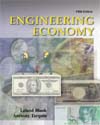Engineering economy is the application of economic factors and criteria to evaluate alternatives, considering the time value of money. The engineering economy study involves computing a specific economic measure of worth for estimated cash flows over a specific period of time. The concept of equivalence helps in understanding how different sums of money at different times are equal in economic terms. The differences between simple interest (based on principal only) and compound interest (based upon principal and interest upon interest) have been described in formulas, tables, and graphs. This power of compounding is very noticeable, especially over long periods of time, as is the effect of inflation, introduced here. The MARR is a reasonable rate of return established as a hurdle rate to determine if an alternative is economically viable. The MARR is always higher than the return from a safe investment. Also, we learned about cash flows: - Difficulties with their estimation.
- Difference between estimated and actual value.
- End-of-year convention for cash flow location.
- Net cash flow computation.
- Different perspectives in determining the cash flow sign.
- Construction of a cash flow diagram.
| 


 2002 McGraw-Hill Higher Education
2002 McGraw-Hill Higher Education